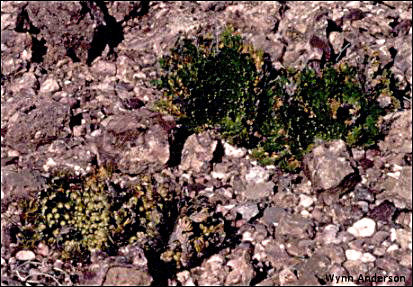
During drought times in the desert, many plants go dormant to the point where the uninitiated may believe them dead. In some cases, the return of wetter conditions results in new leaves appearing on seemingly dead branches or in new shoots sprouting from the base of a shrub. In one case, however, the whole plant appears beyond hope—curled in rigor mortis into a ball of dry stems and leaves.
Comes the rains, though, and as if by magic, the plant uncurls and turns bright green, seemingly brought back from the dead. Indeed, this dweller of the dry limestone hills of the Chihuahuan Desert often is called the resurrection plant and may be sold to tourists and lovers of the unordinary as such.
According to some authorities, the genus Selaginella, to which
this plant belongs, dates back to the Carboniferous Period, the ancient time when the
great coal beds of the world were laid down. If so, this would make it the oldest genus
of higher plants around today—and without even having to be resurrected!
![]()
Contributor: Arthur H. Harris, Laboratory for Environmental Biology, Centennial Museum, University of Texas at El Paso.
Desert Diary is a joint production of the Centennial Museum and KTEP National Public Radio at the University of Texas at El Paso.

Resurrection Plants. The plant in the left foreground is just barely beginning to unfold; those in the upper right are well on their way. Photograph by Wynn Anderson.
West, S. 2000. Northern Chihuahuan Desert wildflowers. Falcon, Helena. 222 pp.